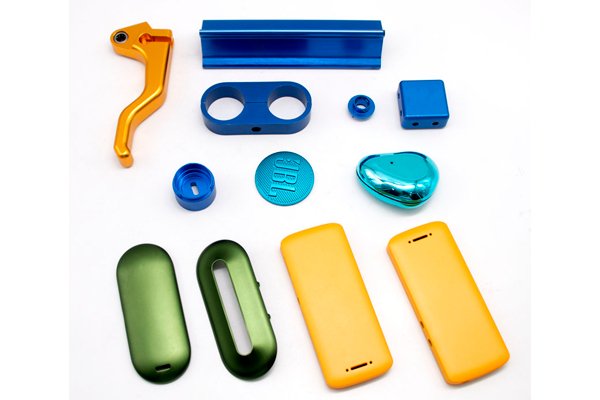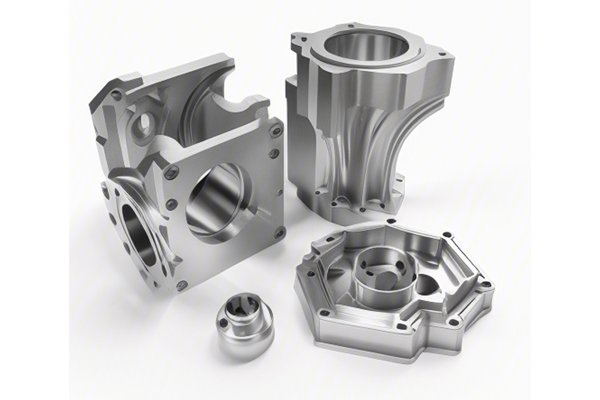When you think about the intricate dance of manufacturing, brass components often take center stage. Imagine a beautifully crafted brass piece that not only serves its practical purpose but also exemplifies precision and reliability. But how do we ensure that these brass components meet our expectations? This brings us to the world of brass quality inspection standards in CNC machining. In this article, we’ll take a deep dive into the essentials of these standards, and how they shape the future of machining. So, grab your favorite drink and let’s unravel the fascinating layers of quality inspection in the world of brass CNC machining together!
Understanding Brass and Its Significance in Machining
Before we get into the nitty-gritty of inspection standards, let’s first understand what brass is. Picture brass as the chameleon of metals. It’s an alloy of copper and zinc, often used for its durability and corrosion resistance. But why brass? Well, have you ever noticed the elegant finish of brass fixtures in homes or the reliability of brass fittings in plumbing? It’s due to its unique properties that can withstand wear and tear, making it perfect for various applications, from musical instruments to electronic components.
In the realm of CNC machining, brass is a popular choice. Its machinability allows for intricate designs, while its mechanical properties ensure longevity. However, with great power comes great responsibility—reliable quality inspection standards must be in place to ensure each piece meets its intended purpose.
The Basics of Brass Quality Inspection Standards
Now that we’re on the same page about brass, let’s explore what quality inspection standards entail. Picture these standards as a safety net—designed to catch any irregularities and ensure that each component not only meets aesthetic expectations but also performance metrics.
Quality inspection standards are a set of criteria created to determine the suitability of brass components for specific applications. These standards assess various factors, including but not limited to:
So, how do we measure up against these standards? Let’s break down some specific inspection methods and standards that play a significant role in the process.
Common Brass Quality Inspection Methods
Whether in a small workshop or a large manufacturing facility, several inspection methods are employed to ensure quality. Let’s sift through some of the most common techniques used in the industry:
Visual Inspection
First up, the good old visual inspection. This method might sound simple, but it’s incredibly effective. Picture this: an expert technician examining every inch of a brass component, looking for any visible defects or inconsistencies. It’s like an eye for detail—a skilled inspector can spot issues that may not show up later in performance tests.
Dimensional Inspection
Next, we have dimensional inspection. Just as a tailor measures fabric to craft a perfect garment, manufacturers use precise tools to measure the dimensions of brass parts against a set standard. This is crucial, as even a slight deviation can lead to performance issues.
Mechanical Testing
Mechanical testing evaluates properties like tensile strength and hardness. Imagine trying to bend a brass rod; it has to withstand your strength without easily warping. Tests such as Ultimate Tensile Strength (UTS) help ensure that the brass won’t buckle under pressure in its intended use.
Chemical Analysis
How do we know if the brass is composed of the right materials? This is where chemical analysis steps in. Using sophisticated techniques like X-ray fluorescence (XRF), manufacturers can determine the exact chemical composition of the brass, ensuring that it adheres to specified standards.
Surface Roughness Measurement
Think of surface roughness measurement as a beauty treatment for brass. Smooth surfaces enhance both performance and aesthetics. Specialized tools measure the roughness of the brass surfaces, helping to ensure they meet the required finish specifications.
Key Brass Quality Inspection Standards to Know
Now that we’ve explored the inspection methods, let’s dive into the actual standards that guide these evaluations. Understanding these standards can offer a roadmap for ensuring quality in your brass machining processes.
ASTM B424
The ASTM B424 standard outlines the requirements for brass rods and bars. This standard serves as a foundational guideline, encompassing everything from mechanical property requirements to chemical composition, thereby ensuring that the brass fulfills its intended application effectively.
ISO 9001
A more holistic quality standard, ISO 9001 is all about quality management systems. Adopting this standard shows a commitment to quality control and continuous improvement. Imagine it as a comprehensive playbook that helps organizations maintain consistent standards in all machining processes, including brass.
ASTM B16
Focusing specifically on wrought copper and copper alloy fittings, ASTM B16 addresses the composition, dimensions, and physical properties required for brass fittings to ensure long-term performance. If you’re in the plumbing or HVAC industry, understanding this standard is crucial.
ASME B16.18
Similar to ASTM B16, ASME B16.18 sets the requirements for cast copper alloy fittings. It’s particularly essential for ensuring compatibility and performance in plumbing applications, helping to prevent leaks and ensuring durability.
The Importance of Quality Inspection in CNC Machining
You might be wondering, why is quality inspection so critical, especially in CNC machining? Well, think of CNC machining as crafting a delicate piece of art. Just like an artist checks their work to ensure every brushstroke is perfect, manufacturers must inspect their brass components to ensure they function as intended.
Challenges in Brass Quality Inspection
While the benefits of quality inspection in CNC machining are clear, it’s also essential to consider the challenges that manufacturers face. After all, even the best-laid plans can run into snags!
Evolving Standards
As technology and materials evolve, so do the standards. Staying updated can sometimes feel like chasing a moving target, requiring continuous training and development.
Equipment Maintenance
Inspection methods often rely on precision instruments that require regular maintenance and calibration. It’s essential to keep these tools sharp; otherwise, results could lead to inaccuracies.
Skilled Labor Shortage
With the growing demand for quality assurance in manufacturing, finding skilled inspectors can be challenging. Investing in training and mentorship programs can help bridge this gap.
How to Implement Effective Brass Quality Inspection
Implementing an effective brass quality inspection process doesn’t have to be overwhelming. Think of it as laying the groundwork for a sturdy house—strong foundations lead to long-lasting results! Here are some steps to consider:
Establish Clear Guidelines
Set explicit brass quality inspection standards at the outset. Work with relevant industry standards like ASTM or ISO to create a focused strategy. With a plan in place, everyone knows what to aim for!
Invest in Technology
Utilize the latest inspection technologies. Investing in advanced tools like digital calipers or CMM (Coordinate Measuring Machines) can enhance precision and reduce human error in measurements.
Train Your Team
Create a culture of quality within your organization. Regular training sessions can keep the team informed about the latest inspection techniques, standards, and tools. Remember, a well-trained staff is your best defense against quality issues.
Continuous Improvement
Embrace a mindset of continuous improvement. Analyze past inspection data to identify patterns or weaknesses in processes. It might feel like a never-ending race, but constant reflection and adjustment keep your quality processes running smoothly.
Conclusion: The Future of Brass Quality Inspection
As we wrap up our exploration into brass quality inspection standards, it’s clear that these guidelines are indispensable in ensuring that the end products meet the highest quality benchmarks. Just as brass continues to evolve with innovations in technology and design, so too must the standards that govern its manufacturing.
The world of CNC machining is intricate, and while challenges exist, they present opportunities for growth and improvement. Imagine standing at the helm of a ship navigating through the sea of manufacturing—you hold the rudder that steers your quality assurance processes.
As you embark on your journey in CNC machining, let the knowledge of brass quality inspection standards guide you toward crafting components that stand the test of time. By prioritizing quality, you’re not just building parts; you’re creating a legacy of reliability and excellence.
So, let’s keep the conversation about quality going! Have any questions or more topics you’d like to dive into? Drop a comment below; I’d love to hear your thoughts, and together we’ll further enrich our understanding of this fascinating industry!






